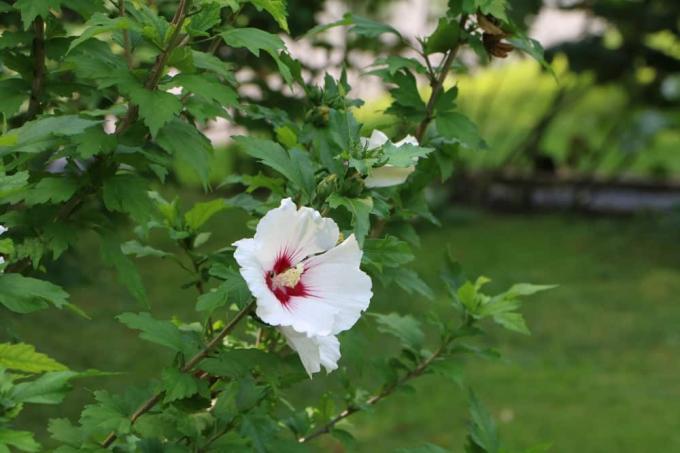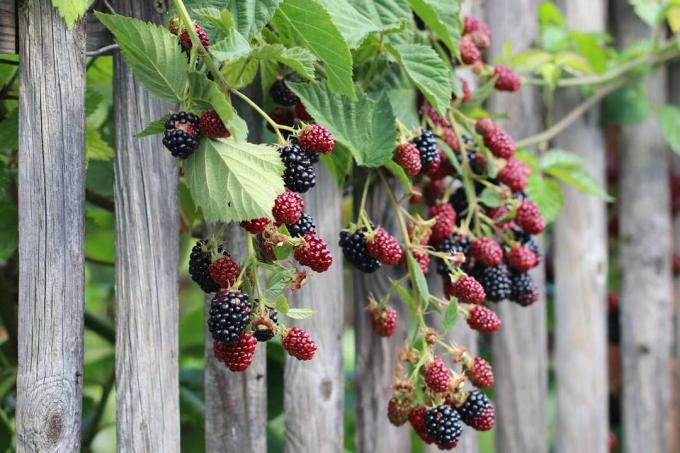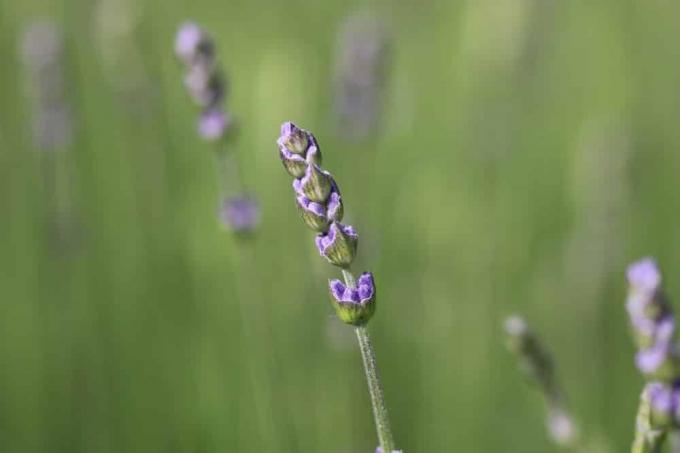

Table of contents
- time
- cutting tool
- cutting edge hygiene
- flaming
- alcohol
- Chemical disinfection
- cutting technique
- After the cut
- types of cuts
- education cut
- standard pruning
- maintenance cut
- taper cut
- hedge trimming
- radical cut
Regular pruning of the garden hibiscus not only stimulates flowering, but also keeps the hibiscus dense, strong and in shape. Although it does not require pruning, it rewards plant lovers and hobby gardeners with significantly more flowers in the following year. In the following, you can find out how you can/should proceed and what you urgently need to pay attention to in the professional pruning instructions for garden marshmallows.
time
The right time to cut back the garden hibiscus is in autumn or spring. Fall is a better time to trim to encourage growth. Whether new shoots, dense foliage or a magnificent growth of flowers, the autumn pruning is more suitable here than later in spring, just before the new growing season begins. However, the temperatures should still be well above 10 degrees Celsius and there should be no ground frost in sight. It is best to cut the garden hibiscus in autumn by the end of the year at the latest September/early October and it should be a dry day for the hibiscus pruning to get voted.
cutting tool
The cutting tool is a very important point. In order to keep the cuts relatively straight without fraying at the sides and as small as possible, only sharp tools such as knives or pruning shears should be used. Electric hedge trimmers for hibiscus hedges are only suitable to a limited extent because they are usually only suitable for cutting back young shoots and thin branches.
As soon as these become a little thicker, the devices usually jam and turn off automatically. This means that only small cuts are possible with an electric hedge trimmer, which are primarily aimed at correcting the shape and straight lines are desired. If they are clearly out of shape and a deep pruning is required, mechanical cutting tools or powerful pruning devices should be used.
cutting edge hygiene
The garden marshmallow always shows an immense robustness in relation to diseases, but the Using dirty cutting tools can quickly lead to infections, especially on damp autumn days to lead. The transmission of pathogens such as fungi have a high chance of damaging the garden hibiscus in the autumn months and when the cutting tool is dirty. These must be thoroughly cleaned and ideally disinfected before each use. Various options are available for this:
flaming
Flaming creates a fire in which the cutting blades are held for a few seconds. Care must be taken here to ensure that there is intensive contact between the blades and the flame, only a few seconds are then sufficient to kill bacteria, viruses and/or fungal spores. A gas Bunsen burner or burning spirit is suitable for flaming.
alcohol
To achieve effective disinfection with alcohol, use either spirit or isopropanol. The spirit is mixed with distilled water in a ratio of 7:1. The isopropanol should be a 70 percent solution that can be bought ready-made in pharmacies, for example. 70% spirit is also available and in theory could save you from mixing. However, this is predominantly undenatured and drinkable alcohol, such as wine spirit, which is priced well above normal spirits.

In either case, your garden hibiscus cutting tools should be placed in the solution and allowed to remain fully submerged for at least two minutes. Then either dry it off with a clean cloth or, even better, don't dry it off but let it drip off.
Chemical disinfection
You don't have to worry about any residue from fungi or bacteria on your garden hibiscus if you dip your cutting tool in it before pruning back in the autumn season. Here, for example, the remedy "Dimanin" from BAYER can be used. As a five percent solution and with an immersion time of just one minute, all harmful residues on scissors or knives are reliably killed.
cutting technique
In order to expose the hibiscus to as little stress as possible from cutting and, of course, disease To prevent this, it is advisable to use a cutting technique in which you make smooth cuts directly on the trunk or branch carry out. In addition, an oblique cut should be made. This reduces the size of the interface. In addition, the water drips off well on a bevel cut, so that the cut can dry better and any bacteria that may be present can be removed with the (rain) water. Is the bevel cut on slanting branches made in such a way that the longer attachment is at the top ideally, the interface is not hit by water at all and dries even better away.
After the cut
Autumn usually brings a lot of wet weather with it. This means the cuts on a garden hibiscus heal/dry much more slowly than they would in warm, dry temperatures. With the longer open interfaces, the risk of illness increases automatically. Even without a dirty cutting tool, fungal spores can get into the interior of the plant parts via the wind and usually spread unnoticed throughout the winter. But virus infections are also among the dangers that can penetrate the plant through moist interfaces. Therefore, interfaces on a garden hibiscus should always be treated in the autumn season. The following products are suitable for this, which are applied to the cut wounds:
- carbon powder
- resin
- Cinammon
- wax
- zinc dust
Tip:
In an extremely humid autumn season, it is advisable to first pre-treat with cinnamon or carbon powder for disinfection and then to seal the interfaces with wax or resin. Zinc dust takes on both properties, disinfects a little and clogs the capillaries.
types of cuts
A cut can have several reasons. Above all, the autumn cut of the garden hibiscus is recommended because of the growth. This can be divided into different areas with regard to the types of cut.
education cut
The term "training cut" already suggests that this is a growth cut for young garden hibiscus. From the first year of life, the young plants should be cut back regularly in the autumn months so that they branch out more in each subsequent year. In the first few years, this is still quite easy due to the usually few shoots. With each year the hibiscus becomes fuller and the effort correspondingly greater.

The autumn pruning should always be done generously by shortening all shoots and the trunk by three quarters. The training pruning only ends in the year when the plant is densely overgrown and has no/hardly any light spot. After that, cuts can be made as needed, as explained below.
standard pruning
The standard cut is a kind of training cut, in which a still young garden hibiscus is cut in this way so that a wonderfully bushy foliage with magnificent flowers grows on a "bare" trunk forms. The "Hibiscus Syriacus Hamabo" variety is particularly suitable for standard growth, which requires a lot of patience demands because it takes between four and six years to get through the professional cut arises.
Cut your plants like this:
- First year: Cut lateral branches down to two or three buds - trunk remains untouched
- Subsequent years: Cut off all branches except for one bud - the leader is shortened to five or six eyes
- final cut: Cut the trunk at the desired height - cut off all lateral shoots
- Earn Crown: only cut back well-developed branches to one or two eyes
maintenance cut
A maintenance cut for your garden hibiscus is a measure in which you can influence the growth habit and/or crown growth. The cut is made as follows:
- Dried and diseased branches are cut off
- Shorten too long and weakly developed branches to three or four eyes
- Branches that develop strongly on one side, separate just above a low-lying branch
taper cut
Over the years, the hibiscus in the garden often becomes increasingly lighter. This is usually mainly due to the inner branches, which wither, consume unnecessary nutrients and take up space for fresh, new shoots. That is why every garden hibiscus sooner or later needs a pruning for rejuvenation. As a precaution, this can of course also be carried out before your garden specimen becomes ever lighter. For the taper cut, do the following:
- Heavily thinned: severe pruning of all branches and trunk by two-thirds
- Normally exposed: Prune back by a third and trim any old, dead branches and cross-growths
- clearing cut: Thin out and completely cut off dry, shaggy-looking and cross-growing branches
hedge trimming
The garden hibiscus is becoming increasingly popular as a hedge. This requires a special pruning in the autumn months so that it gets a compact hedge shape and numerous flowers grow on fresh shoots every summer. Pruning should be done in September or October as follows:
- Complete pruning by a third
- Complete pruning every year
- Cut away dried branches, especially in the inner area
- Pull string along the hedge for straight cutting lines
Tip:
If you cut the hibiscus hedge so that it slopes slightly upwards, the light penetration will be improved. This encourages growth and reduces the chance of indoor senescence.
radical cut
A radical cut is particularly recommended if the hibiscus has previously suffered severely from an illness or it shows extreme thinning due to its age and/or growth is hardly or not evenly he follows. Although the hibiscus usually tolerates a radical cut well, this still leads to stress. Depending on why a radical cut appears to be the solution for healthy and vigorous growth, it does not always recover afterwards.
It is therefore advisable to extend a radical cut over a few years. This means the hibiscus is trimmed a little regularly throughout the year and a little more each year in the fall season than the year before. You can continue this until the radical cut ends above the first branch on the main stem. This is usually between five and four centimeters above the surface of the earth.
 garden editorial
garden editorial I write about everything that interests me in my garden.
Learn more about pruning

Eucalyptus dried up: cut back now?
When a eucalyptus dries up, some owners immediately think of cutting it back. Because they want to see fresh green bud quickly. The chances of that happening may be good. But one thing must not be left out: research into the causes! Otherwise a new cycle of drying up and cutting begins.

Cut blackberries: Instructions for the right cut
Bramble branches only bear fruit for one summer, after which they are used up and die off in winter. It's a good thing that new canes grow back in time for the following year. Cutting care means: What no longer supports should be removed, young rods must be optimally trained.

cutting snowball | 13 tips for pruning
When it comes to snowballs (Viburnum), the opinions of numerous hobby gardeners differ when it comes to cutting. Main reason against pruning: Destruction of the natural appearance by pruning. Find out now when it is unavoidable and which tips should be heeded.

Cutting sage: 6 tips for cutting back
Cutting measures and their ideal time depend on the species of sage plants, because they have differentiated ways of life. There are woody and herbaceous representatives that require different attention. In order to carry out the measures, a basic set of tools is helpful.

Pruning hydrangeas: when is the right time?
Hydrangeas are a real beauty because of their flowers. In the long term, however, the flowering power is only maintained if regular pruning takes place. Because cutting off withered or dried plant parts offers protection. The following guide shows when this measure should be taken.

Cutting Lavender | When is the best time?
Lavender is a popular perennial, but difficult to cut. Without regular pruning, the shrub becomes lignified and less robust. Choosing the right time is important for pruning. When to cut depends on the use of the perennials.
